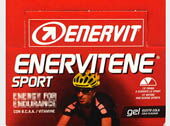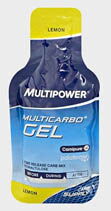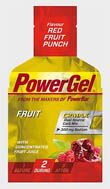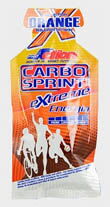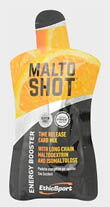The world of food supplements today offers athletes a wide range of products made for every specific need.
Per endurance sports enthusiasts ('endurance' sports), special supplements are available that optimize energy reintegration and ease of use: energetic gels.
Similarly to energy bars, energy gels are designed to allow athletes to assimilate energy substances (mainly carbohydrates / sugars) to cope with any increased need for energy sources, a situation that inevitably occurs when facing long and tiring athletic efforts . The energy gels provide this integration in liquid / gelatinous form , therefore optimal for immediate assimilation without 'complications' such as chewing and digestion of solid substances.
Sugar integration: why and when it is needed
The practice of endurance sports involves an activity that puts our body to the test, forcing the body to work in a demanding aerobic condition and often at the limit of anaerobic condition, with consequent reactions that involve large consumption of calories and carbohydrate reserves. We have already dealt with the aerobic / anaerobic phases from the biological point of view in this blog article . Let's remember the basic points:
- during motor activities in which our body is engaged with muscular efforts even at a good level but not at the limit of our maximum Energy, our body puts in place an energy system that produces energy (to move muscles) by burning lipids and carbohydrates: it is the aerobic energy system , which works with a prevalent consumption of lipids (fats) for limited efforts and a prevalent consumption of carbohydrates (carbohydrates) for greater efforts
- for motor activities that require great strength and Energy, our body switches to the production of energy with the anaerobic energy system , which burns carbohydrates and produces excess lactic acid, with an action that is not sustainable for a long time
- in order to carry out prolonged efforts, as in endurance sports, it is important that our body is able to maintain itself in the aerobic energy system for a long time, and in case of need it is important to replenish the reserves of carbohydrates, replenishing sugars / carbohydrates
During medium and demanding aerobic efforts and during anaerobic efforts, our body therefore burns carbohydrates (glucose / glycogen), and must therefore have a reserve of these substances (such as a petrol tank for an internal combustion engine ..). Glucose and glycogen are the 'sugars' needed by our body ; in reality the more precise term is not sugars but carbohydrates: glucose is a simple carbohydrate (monosaccharide), glycogen a complex carbohydrate (polysaccharide, glucose polymer).
The glucose is the sugar in the blood, produced in the liver and is the main source for the production of ATP, the energy source of cells. Glucose is a simple, rapidly absorbed carbohydrate with a high glycemic index (it is in fact used as a unit of measurement for the glycemic index, equal to 100 for glucose). The measurement of blood glucose concentration represents 'blood sugar'. In the event of a lack of glucose in the blood, we speak of 'hypoglycemia' (normally the hypoglycemia threshold is assessed for values below 60 mg / dl of blood glucose); the excessive presence of glucose in the blood is called 'hyperglycemia' (usually it is evaluated for values above 126-140 mg / dl of glucose in the blood).
The glycogen present in our body is stored mainly in the muscles, and partly in the liver. It constitutes the carbohydrate reserve that will be used by the muscles themselves in case of muscular efforts. Glycogen is produced in the liver from glucose, and can undergo the reverse transformation in the case of energy needs. In the anaerobic phase (lactacid anaerobic system), muscle glycogen is the main energy source.
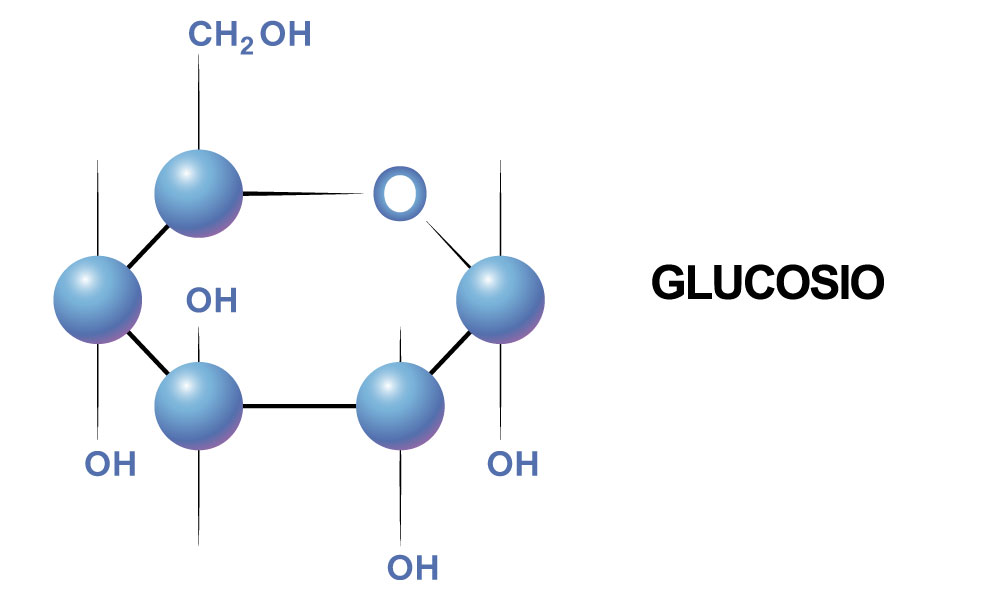
The production of glucose and glycogen in our body is mainly supplied by food, and the main foods that serve for this supply are those that contain carbohydrates (although Protein and fats also provide, to a lesser extent, these energy substances).
Carbohydrates differ in simple and complex:
- The simple carbohydrates , or simple sugars are carbohydrates that are quickly assimilated; they are the most immediate source of energy for living organisms; the 'monosaccharides' such as gluocose, fructose, ribose etc. belong to this group. Among the simple carbohydrates we also find the 'disaccharides': they are carbohydrates formed by the reaction between two monosaccharides; Sucrose (cooking sugar ..), maltose, lactose, etc. belong to this group.
- the complex carbohydrates are polysaccharides, formed by the union of more monosaccharides; they are digestible more slowly, therefore they are assimilated with longer times; this group includes glycogen, maltodextrins, starch, Vitargo (patented and registered formula of a polysaccharide), cyclodextrins etc.
The use of these substances in supplements (such as energy gels) therefore gives different results: simple carbohydrates are immediately assimilated with ease and immediately give the energy contribution (energy gels mainly use this type of ingredients); complex carbohydrates are assimilable with longer times and give a more diluted energy contribution over time. Energy gels are often made with a mix of different carbohydrates, sometimes also using lipids and fatty acids (such as MCTs, medium chain triglycerides) to achieve different energy delivery results.
If the integration of sugars is important and fundamental for those who practice endurance sports, it must also be remembered that the excessive assimilation of sugars can also lead to very negative effects. Sugars are among the main causes of dental caries. Excess sugars are stored in adipose tissue, they are the main cause of obesity and weight problems. A high assimilation of sugars can also cause an excessive response of our body in the production of insulin: this well-known hormone (insulin) is in fact generated (by the pancreas) in response to an increase in blood sugar, with the task (among its various functions) to facilitate the passage of glucose from the blood to the cells. Excessive insulin production can cause the opposite phenomenon, 'reactive hypoglycemia'
Those who use energy supplements must be able to evaluate all these situations; some supplements and energy gels are indicated for example only for the final 'sprint': they immediately give a high energy support, but after a while they cause counter-reactions not suitable for prolonged efforts.
DIRECTIONS energy gels
Energy gels are food supplements with carbohydrate concentrations, useful for replenishing carbohydrates during muscular efforts. The liquid / gelatinous substance is optimized to facilitate its assimilation, avoiding digestive problems (and also avoiding losing even minimal energy with chewing ..). Here are some aspects of using gels:
- before physical exertion (competition or training), it is better to fill up (breakfast or snack) with solid foods or energy bars, preferably to be consumed at least 30 minutes before the start of the activity; for many energy gels it is indicated in the card to take it even immediately before the activity .. it is obviously an alternative to the use of bars or other
- choose energy gels according to need: replenishment of sugars at different assimilation rates during endurance activity in the initial and intermediate phases; energy input with maximum efficiency in the final stages
- take energy gels during activity, at regular intervals, about every 30-60 minutes (according to the type of gel, refer to the specific data and characteristics of each product)
- choose energy gels also by evaluating the personally preferred taste / flavor, under stress the stomach often transmits a sense of nausea, ingesting gels with a pleasant taste is a help from many points of view
- it is always useful to take a sip of water together with the gel; use plain water or water with salt supplements, avoid water enriched with additional energy or protein supplements, avoid soft drinks
- it is useful to take energy gels even immediately after a long endurance effort: they help to quickly rebuild the muscle glycogen stores consumed
List of Energy Gels
We propose below a list of energy gels produced by the best brands of food supplements. The list is not made to give a ranking among the products (it is impossible to objectively evaluate which is better or worse, also given the variety of ingredients, weight, caloric support, taste, etc.), but to indicate which various characteristics you can choose from the vast availability of solutions and types.
We emphasize that food supplements are not intended as a substitute for a healthy and varied diet; IAFSTORE recalls the importance of following a healthy lifestyle and a balanced natural diet. Per a correct sporting activity (especially at a competitive level) and to better evaluate the specific personal physiological characteristics and food diets or the simple use of supplements, it is always better to contact specialized centers and qualified trainers.
Per each listed product it is recommended to carefully read the ingredient and nutritional data present in the product sheet, with attention for any food intolerances.
The following list contains only a part of the vast offer of gels available on the market.
>> You can view the complete list of energy gels available on IAFSTORE by clicking here.
To see all the specific information of each individual product, you can view the IAFSTORE.COM card by clicking on the image of each listed product.
We list a maximum product per brand; many manufacturers supply more than one type of energy gel: by entering the product sheet it will be possible to see the other possible choices offered by the same brand.

